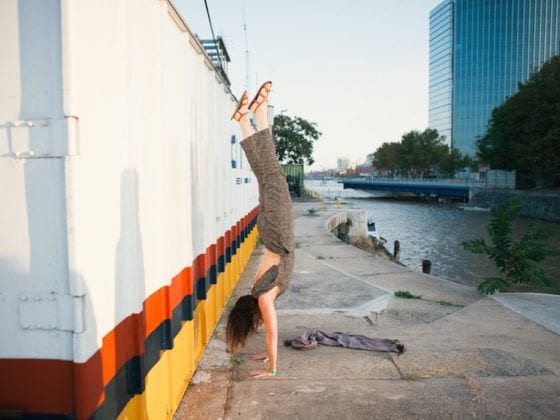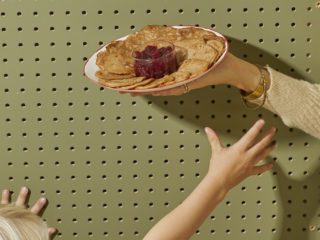Haunted and heartbroken, I cried for an hour after reading Kate Fagan’s article “Split Image,” which revisits the life and death of Madison Holleran, a nineteen-year-old collegiate athlete who committed suicide. Her story was eerily similar to my own as an eighteen year old battling severe depression; I wanted to end my life. On the outside and on social media, Madison’s life looked near perfect.
Similarly, to onlookers I had everything going for me, but inside I was coming apart at the seams. I tried hard to make myself feel happy, to make myself feel worthy. Next to my white nightstand sat my stack of self-help books including, “The Seven Habits of Highly Effective Teens,” “The Power of Positive Thinking”, and my journal, where I purged my deepest thoughts and listed my big, lofty goals daily: to lose ten pounds, become a model, to get a full-ride scholarship for soccer.
Yet, shortly after I graduated sum cum lade from high school, I came undone. I cracked under the pressure to be perfect. Deep-seeded insecurity, stress, perfectionism, and grave hormonal and physiological imbalances collided, shattering my picture-perfect world into bits of broken pieces.
I couldn’t eat. I couldn’t talk; I couldn’t sleep. My body was alive, but there was no life within me. I found myself in the behavioral health partition of the hospital – signing papers that I was a danger to myself. Everything that had deemed me worthy in the world was stripped from me. My success. My beauty. My dreams. My goals. My sanity.
We are afraid to appear less than perfect and our brokenness can drive us to isolate, sometimes to dangerous degrees.
Madison’s story isn’t an isolated issue. A complex matter, mental illness is real and prevalent. Each year in the U.S., approximately two million adolescents attempt suicide. Up to 20 percent of girls aged 10-19 are experiencing episodes of major depression and in 2005 alone, about one-tenth of all teenage girls tried to end their lives. Women — especially young women— are struggling with struggling.
There is immense pressure to appear to have it all together.
Author Stephen Hinshaw’s book “The Triple Bind: Saving Our Teenage Girls from Today’s Pressures“ addresses the unreasonable societal and cultural expectations placed upon young women today. The Triple Bind is “a set of impossible, contradictory expectations.” Hinshaw writes, “…Our teenage girls are baffled, distressed, and overwhelmed as they try ever harder to meet these ever more punishing demands.” To summarize, the Triple Bind is a set of three demands on young women: “one, to be nurturing and supportive (the traditional role for girls); two, to be competitive and “on top” (with the new opportunities girls have); and three, to make it all seem effortless and natural, in a ultra-sexualized and ultra-feminized way, with no real alternatives to develop a unique identity.” While depression is a mental illness with genetic and physiological roots, life’s pressures, be it adjusting to college life or one’s own self-imposed standards only intensify it.
I know from my story and Madison’s story that appearances lie. In the ESPN feature article, Fagan spends a considerable amount of time focusing on the happy and beautiful image Madison portrayed through her Instagram account. Fagan writes, “Young women growing up on Instagram are spending a significant chunk of each day absorbing others’ filtered images while they walk through their own realities, unfiltered.” One hour before Madison died, she posted a beautiful picture of Rittenhouse Square, a Philadelphia city park with twinkling lights and benches. Often, the image we project isn’t reflective of our day-to-day reality. We are afraid to appear less than perfect and our brokenness can drive us to isolate, sometimes to dangerous degrees.
I still have hard days at times, but I know that hope is alive and that such pain doesn’t equal permanence. I believe that mental illness is real, but very treatable.
Madison Holleran’s family is hoping to spread the message that, “It’s OK to not be OK. It’s OK to show people you’re not OK.” How can we spread this message and create a culture where brokenness is not shamed? How can we properly come alongside people in their suffering, and what questions should we be asking our friends in an effort to create an atmosphere of authenticity?
Many people ask me how I got through it. Simply stated, miracles saved me, medication helped me, my faith filled me, and my family sustained me. There are moments, like right now, when I second guess why I continue to share the ashes of my life instead of forever bury them beneath the false appearance of someone who has always had it together. But I’m alive and full of joy, so I will not be silent. I still have hard days at times, but I know that hope is alive and that such pain doesn’t equal permanence. I believe that mental illness is real, but very treatable.
Madison’s family has set up a foundation in her name with the mission of preventing suicide and helping those in a crisis situation with phone numbers and resources that will assist them during times of need. If you or someone in your life is struggling, please reach out.
Know this: You are irreplaceable, and this world is more beautiful with you in it.
National Suicide Prevention Lifeline
1.800.273.TALK (273-8255)
2-1-1
Dial 2-1-1 or visit 211.org. This free referral service of United Way links people in need with a variety of counseling and treatment options.
Image via Gillian Stevens













3 comments
Beautiful. Thank you.
Thanks for writing this Allie, this was so beautifully written. It’s so true that we try to put our life through filters (both in the online and offline world), to make it appear like we’re okay. We don’t have to feel ashamed by our pain and imperfection.
Thank you Naomi for reading and for your thoughts and encouragement.